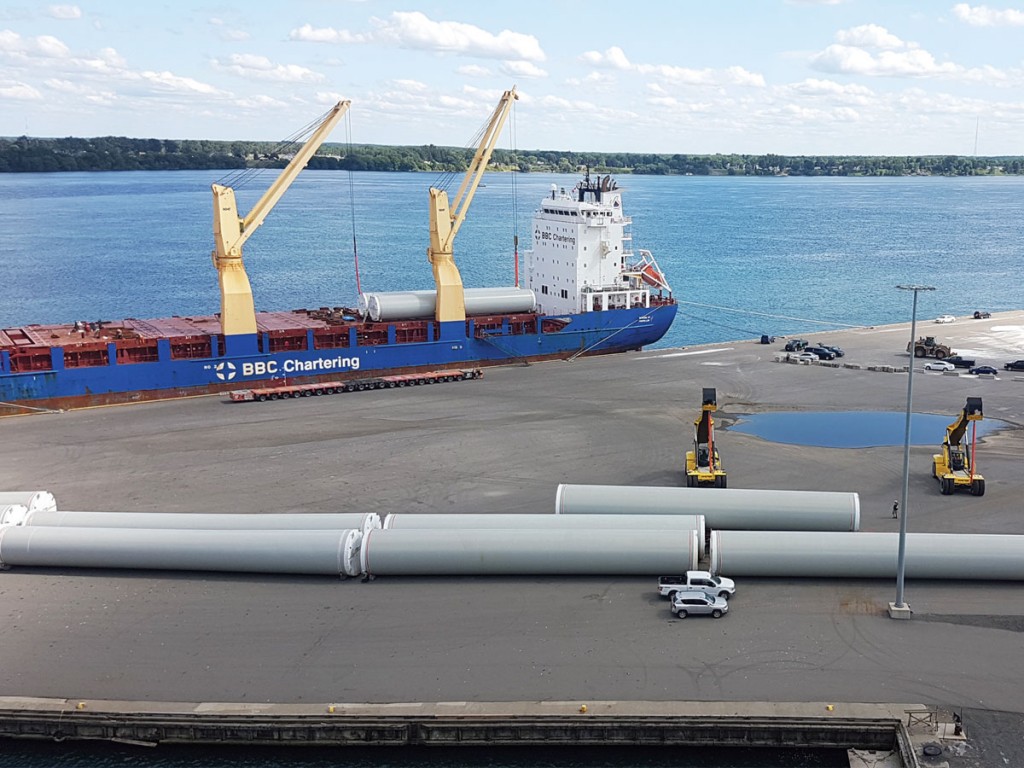In the past few years, project cargo has represented a steady growth business for Canadian ports on the Great Lakes/St. Lawrence maritime corridor, led by wind farm components manufactured regionally or in Europe as well as industrial machinery for oil and forest sector developments. This upward trend appears to have entered a pause period prior to an anticipated recovery next year in an increasingly competitive market.
“Volumes are down, but at least we are receiving rate inquiries, predominantly for 2020 and 2021,” noted a terminal operator. “There is certainly a lot of price shopping by project managers comparing the Great Lakes and the US East Coast routings. They factor in the stevedoring along with the inland costs.”

Some project carriers also have been critical of the high costs of pilotage on the North American waterway.
Canadian ports on the waterway that regularly handle project cargo include Hamilton, Thunder Bay, Trois-Rivières, Oshawa, Johnstown and Valleyfield (a staging center for project components destined for Arctic communities).
St. Lawrence Seaway traffic statistics to the end of July showed general cargo (which includes project cargo) down 35% to 992,000 metric tons from 1.5 million tons a year earlier.
At the Port of Thunder Bay, on the tip of Lake Superior, Keefer terminal had handled just 7,600 tons by the end of July, almost half of the year-earlier volume. The terminal has been re-configured and expanded, so remains in a strong position to handle dimensional cargoes destined for mine sites, wind farms and oilsands projects in Western Canada.
Still riding a robust trend, however, is the multi-modal Port of Johnstown on the St. Lawrence Seaway in eastern Ontario, thanks to vessels delivering Enercon turbine components from Germany for the Nation Rise Wind Farm project. The cargo represents a major win for the port, which completed a multi-million-dollar infrastructure project in 2016 that included several acres of laydown space in order to accommodate this type of heavy-lift cargo.
The first vessel, the BBC Kurt Paul, arrived in August. In total, 12 vessels were expected to arrive over a 10 to 12 week period to deliver the components for the wind energy project.
Located approximately 25 miles southeast of Ottawa, near the South Nation River, the Nation Rise Wind Farm features 29 Enercon wind turbines and is situated in the Municipality of North Stormont within the United Counties of Stormont, Dundas and Glengarry.
Logistec Stevedoring has been contracted to move the components from the vessels onto the dock while Bellemare transportation has been hired to transport the components to the construction site.
For the past two years, the Port of Johnstown has been investing in bolstering its infrastructure, and the Canadian government recently announced funding of C$4.8 million for further upgrades. Robert Dalley, general manager of the Port of Johnstown says: “It is very gratifying to see our vision come true and to see all our hard work and effort paying off.”

Follow us on social media: